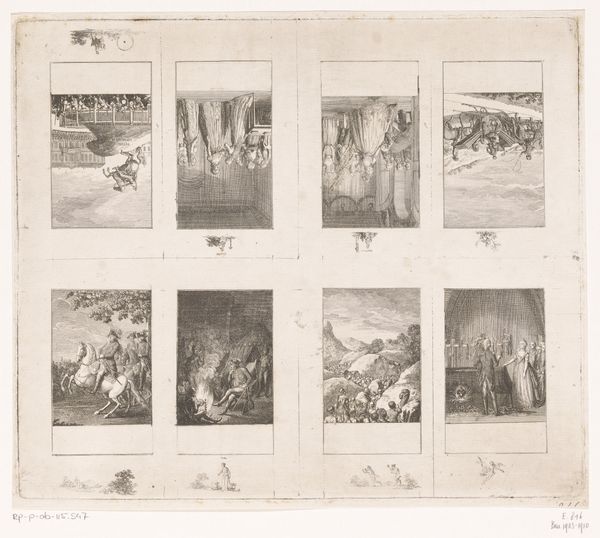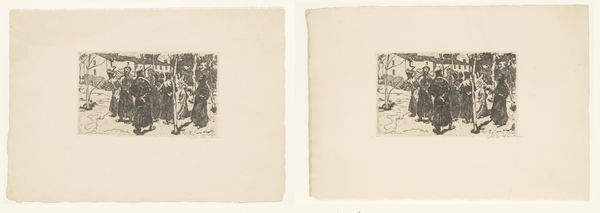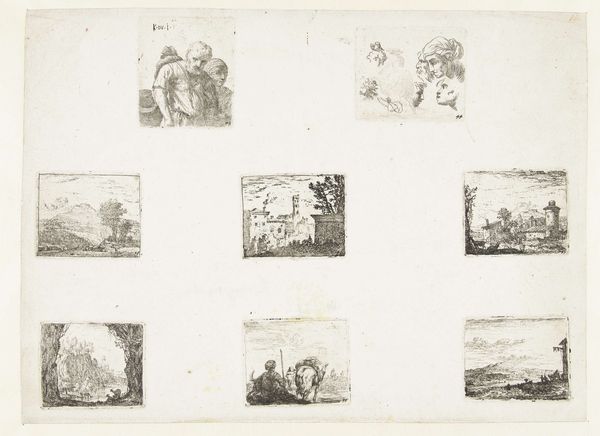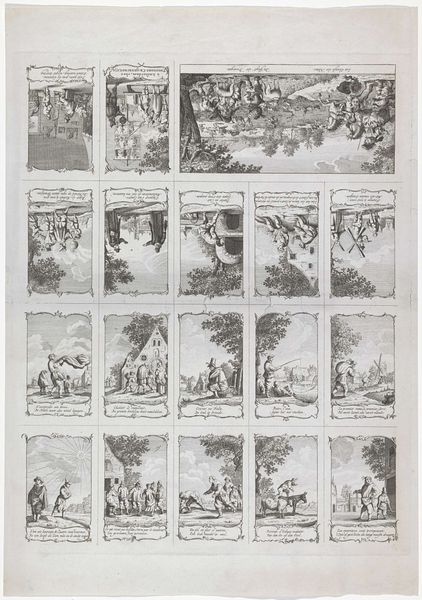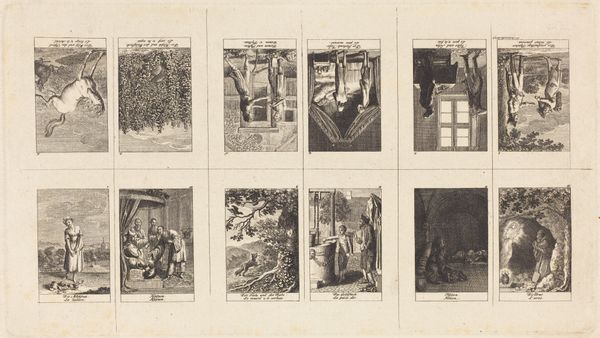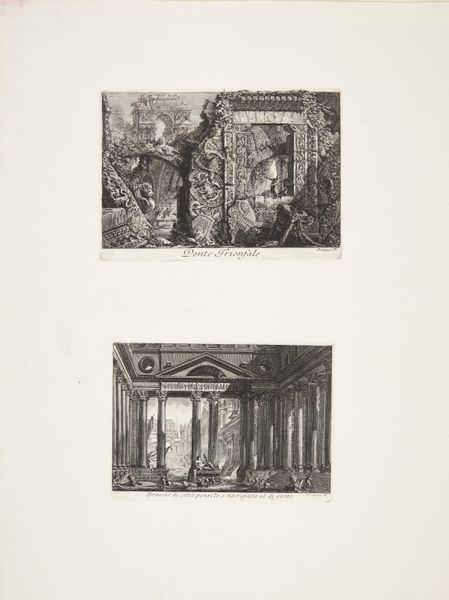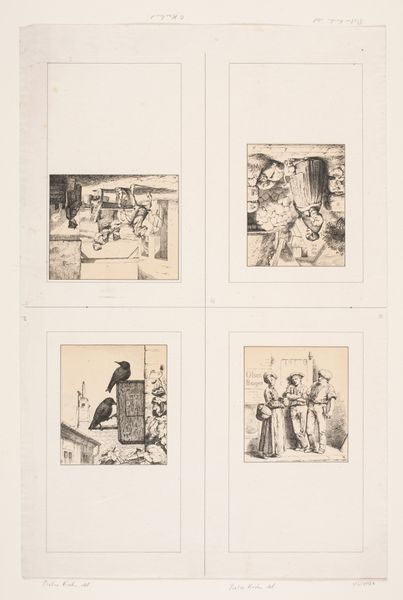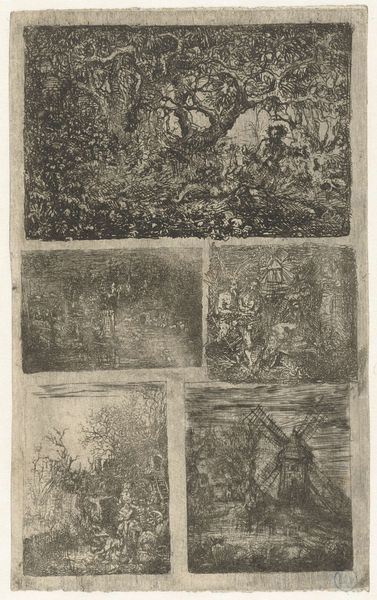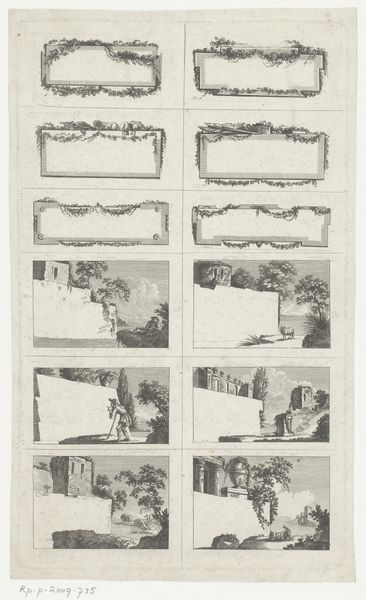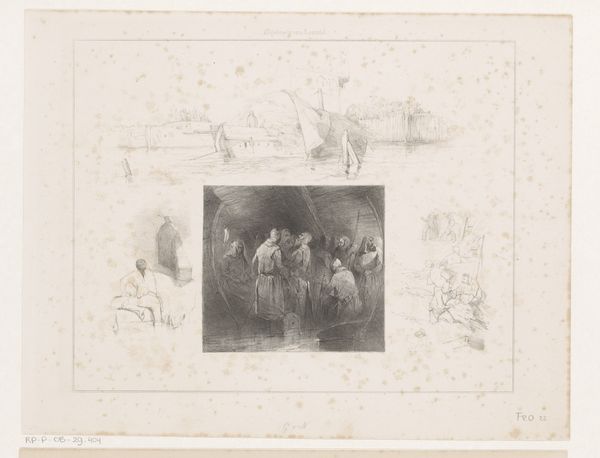
Twaalf voorstellingen uit de geschiedenis van de eerste kruistocht 1800
0:00
0:00
danielnikolauschodowiecki
Rijksmuseum
Dimensions: height 234 mm, width 415 mm
Copyright: Rijks Museum: Open Domain
Curator: Here we have Daniel Nikolaus Chodowiecki's "Twaalf voorstellingen uit de geschiedenis van de eerste kruistocht," dating from around 1800. These twelve scenes from the First Crusade are rendered through etching and engraving, combining print and ink on paper. Editor: My first thought is the incredible detail Chodowiecki achieves with these relatively small scenes. The overall composition creates a narrative tapestry—it reminds us how much historical memory relies on circulated imagery, particularly about power and religion. Curator: Exactly. Think about the conditions under which this artwork was produced. As reproductions, engravings were inherently designed for distribution and collective viewing, which in itself democratized historical narratives, disseminating complex ideas to a broader public. How do you see this process influencing interpretations of power? Editor: Well, the material constraints immediately become visible. Each frame relies on precise lines etched with meticulous labor, demanding incredible control. Then there's the chemical process, the paper stock. The crusades were fuelled by access to resources, this art both echoes and participates in those power structures through consumption and image reproduction. Curator: Absolutely. Looking closer at some of the imagery— sieges, battles, and processions, it underscores the entanglement of religious fervor with violence and the political ambitions of various factions involved. It feels less like a straightforward account and more like a staging of ideological struggle. Consider who commissions such imagery, whose narratives it serves to reinforce. Editor: That is critical. I see each framed scene operating as a controlled exercise of narrative power, the selection, framing and printing – this controls the past through careful material action. It would be very revealing to study the origin and use of the paper on which the print was made. The availability of that stock might also subtly affect how this story can be circulated, changing interpretations across locations and income groups. Curator: True. Examining this piece, in its complete context encourages questions around historical agency, and representation that can offer nuanced perspectives on collective memory. Editor: Thinking about it this way deepens my understanding of this historical episode itself and also how interpretations take physical form and spread based on material possibilities.
Comments
No comments
Be the first to comment and join the conversation on the ultimate creative platform.

